Providing a superior customer experience is more important than ever for high-performing call centers. Customer-focused companies are 60% more profitable, and happy customers pay up to 10% more for great service.
However, creating a better customer experience can be difficult when you lack the right tools. That’s why having a call center agent performance scorecard helps you efficiently measure your team’s work and take essential steps to improve.
In this article, we walk through a simple five-step formula for creating a call center scorecard. This way, you can analyze agents objectively, reward top performers, and identify areas for improvement.
If you’re looking for an easy way to track call center agents’ time and tasks, book a demo to experience Time Doctor for yourself. With our workforce management tool, you can get real-time visibility into agent workflows, creating more accountability and greater transparency for your remote team.
5 steps for creating an effective call center scorecard
To measure agent performance, call center managers need a reliable framework. Follow the steps below to build yours.
1. Clarify your goals
Start by getting clear on what you want to achieve. Some common goals for call center quality scorecards include:
- Decreasing call times: Is your call handle time far too high? Are you concerned it’s affecting your bottom line? Assess how quickly agents manage customer interactions and find areas for improvement.
- Increasing customer satisfaction: Are you seeing negative customer feedback trends? Learn how agents manage challenging customer calls so you can take steps to boost customer satisfaction.
- Offering coaching or training: Want to coach low-performing agents so you can improve call center performance metrics across the board? Identify agents who need help so you can offer essential training.
- Ensuring compliance: Concerned your agents aren’t checking all the required boxes during calls? Find commonly missed steps so you can create a workflow that increases agent adherence.
2. Choose relevant metrics
Once you know what you want to accomplish, decide on the most beneficial measurements. Some standard call center metrics for inbound agents include:
- Average handling time (AHT): Total time a customer spends on a call, including talk and hold time
- First response time (FRT): Amount of time it takes an agent to acknowledge receipt of a customer issue
- First call resolution (FCR): Measures how well an agent resolves a customer concern on the first contact
- Average speed of answer: Amount of time it takes for an agent to answer a customer call (i.e., initial hold time)
- Average call abandonment rate: Percentage of customers that hang up before getting a resolution
- Customer satisfaction (CSAT): Percentage showing customer satisfaction levels with a company and its offerings
The metrics above can easily quantify call outcomes. However, they don’t offer much qualitative data for agents or calls and are less useful for outbound sales agents.
As a result, many call center monitoring scorecards also use qualitative metrics to assess soft skills, agent behavior, and product knowledge. Here are some to consider measuring:
- Greetings
- Closings
- Empathy
- Tone
- Solution quality
- Answer accuracy
- Value proposition
- Needs analysis
- Objection handling
3. Decide how to measure
Next, choose a system for consistent measurement. Generally, you can use software for quantitative call center agent performance metrics. Some popular platforms include the following:
- CallMiner is a customer intelligence platform that offers robust customer satisfaction and average time analytics.

- Enthu.ai is a conversation intelligence platform that uses call monitoring to improve call center quality assurance.
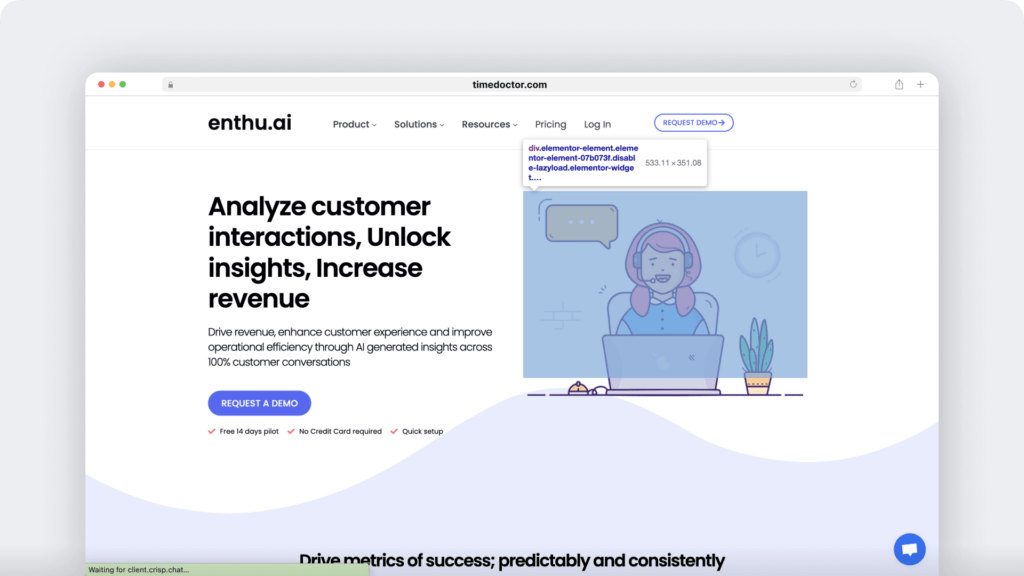
- Five9 is a call center as a service (CCaaS) platform with analytics reporting on everything from the average answer speed to call abandon rate.
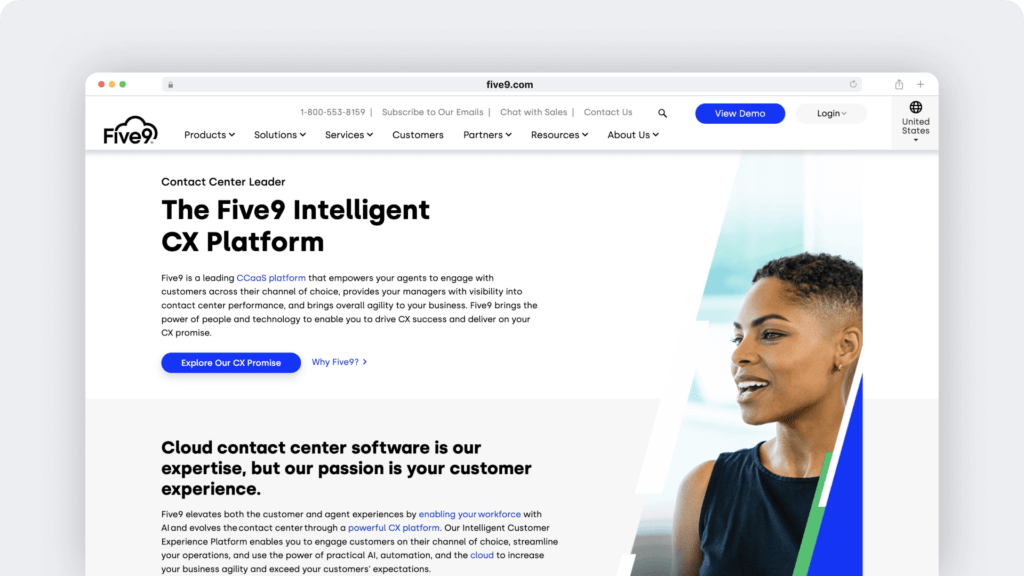
- RingCentral is a customer experience platform that measures everything from the number of calls to CSAT for each agent.
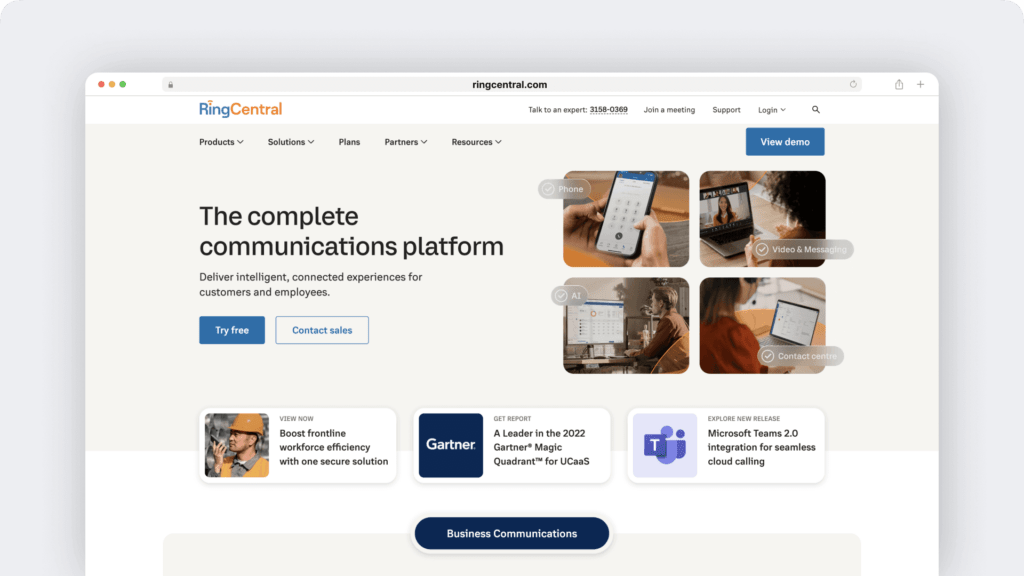
Keep in mind that not all call center software can assess agent quality. In that case, your team can use call recording or monitoring to review and manually score agent performance.
Although manual scoring can be time-consuming, it can be much more accurate. Reviewing calls manually can also help your management team better understand call trends so you can give agents the tools and assistance they need.
4. Communicate the plan with your team
Once you decide on a system for agent evaluations, share the plan with your team. Reveal the metrics you plan to use so agents understand how they get scored. Not only does this step provide transparency, but it enables agents to attempt to perform their best.
Clarify the key performance indicators (KPIs) you plan to use to review agent performance. For example, you might share that you want to reduce the average call abandonment rate to 5% or see CSAT scores of 80 or higher.
Tell agents how you use these quality assurance scorecards. For instance, you might offer coaching or require training for agents who score below certain thresholds.
5. Review and revise
After you roll out your performance management plan and test your scorecards, review the process. Do the scorecards include everything you need to measure? Are the KPIs realistic, and how well are agents performing?
Use your review to make any necessary revisions and improve both the process and the outcome. Continue communicating with your team to maintain transparency and build trust.
Example call center agent scorecards
The most effective scorecard questions tend to fall into one of three categories:
- Yes or no questions
- Qualitative questions that require managers to grade performance (e.g., “good,” “needs work,” and “poor”)
- Quantitative questions with data-driven responses
Here are some example questions for four different types of contact center agents.
Customer service agent scorecard example
Greeting
- Did the agent use a scripted greeting?
- Did the agent inform the customer about the recorded line?
Understanding the issue
- How well did the agent troubleshoot the issue?
- How well did the agent demonstrate product or service knowledge?
Resolving the issue
- Did the agent provide the most efficient solution?
- Did the agent follow the script for the solution?
Closing
- Did the agent ask about additional questions before closing the conversation?
- Did the agent prompt the caller to complete a customer survey?
Tone
- How confident did the agent sound?
- Did the agent use brand voice successfully?
Technical support agent scorecard example
Greeting
- Did the agent use a scripted greeting?
- Did the agent inform the customer about the recorded line?
Problem-solving
- How well did the agent understand the issue?
- How well did the agent demonstrate product or service knowledge?
Communicating next steps
- Did the agent escalate the call when necessary?
- Did the agent share realistic time frames for resolving the issue?
Closing
- Did the agent ask about additional questions before closing the conversation?
- Did the agent prompt the caller to complete a customer survey?
Tone
- How confident did the agent sound?
- Did the agent use brand voice successfully?
Inbound sales agent scorecard example
Greeting
- Did the agent use a scripted greeting?
- Did the agent inform the customer about the recorded line?
Sales discussion
- How well did the agent assess and understand the customer’s needs?
- How well did the agent share the product or service’s value proposition?
Handling objections
- How well did the agent respond to customer objections?
- How well did the agent execute upsells or cross-sells?
Closing
- Did the agent close the conversation with a prompt to complete the next steps?
- Did the agent inform the customer about a survey?
Tone
- How confident did the agent sound?
- Did the agent use brand voice successfully?
Outbound sales agent scorecard example
Greeting
- Did the agent use a permission-based opener?
- Did the agent inquire about challenges or priorities?
Making the offer
- How well did the agent assess and understand the customer’s needs?
- How well did the agent share the product or service’s value proposition?
Handling objections
- How well did the agent respond to customer objections?
- Did the agent share relevant customer testimonials?
Closing
- Did the agent establish a time frame for following up?
- Did the agent close the conversation with a prompt to complete the next steps?
Tone
- How confident did the agent sound?
- Did the agent use brand voice successfully?
Example performance scorecard templates
With our call center agent scorecard templates, you can get a head start on creating your own scoring framework. Customize the template and adjust it as necessary to meet your needs.
Customer service scorecard template

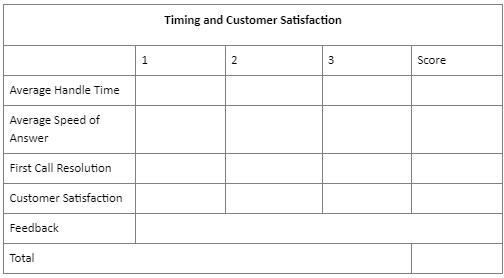
Outbound agent scorecard template
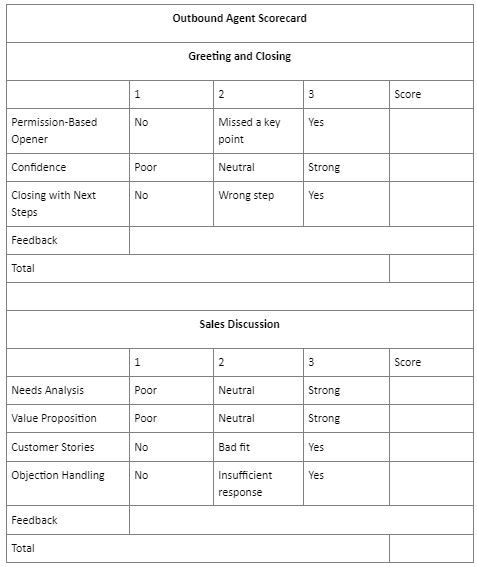
Next steps for agent performance management
Scorecards are crucial for call center quality assurance. However, for most contact centers, they’re just one step in maintaining excellent agent performance. With Time Doctor, you can manage remote teams and outsourced call centers with time tracking, task management, and productivity insights. Schedule a demo to experience our workforce management platform firsthand and see how it can improve productivity by more than 30%.

Andy is a technology & marketing leader who has delivered award-winning and world-first experiences.


